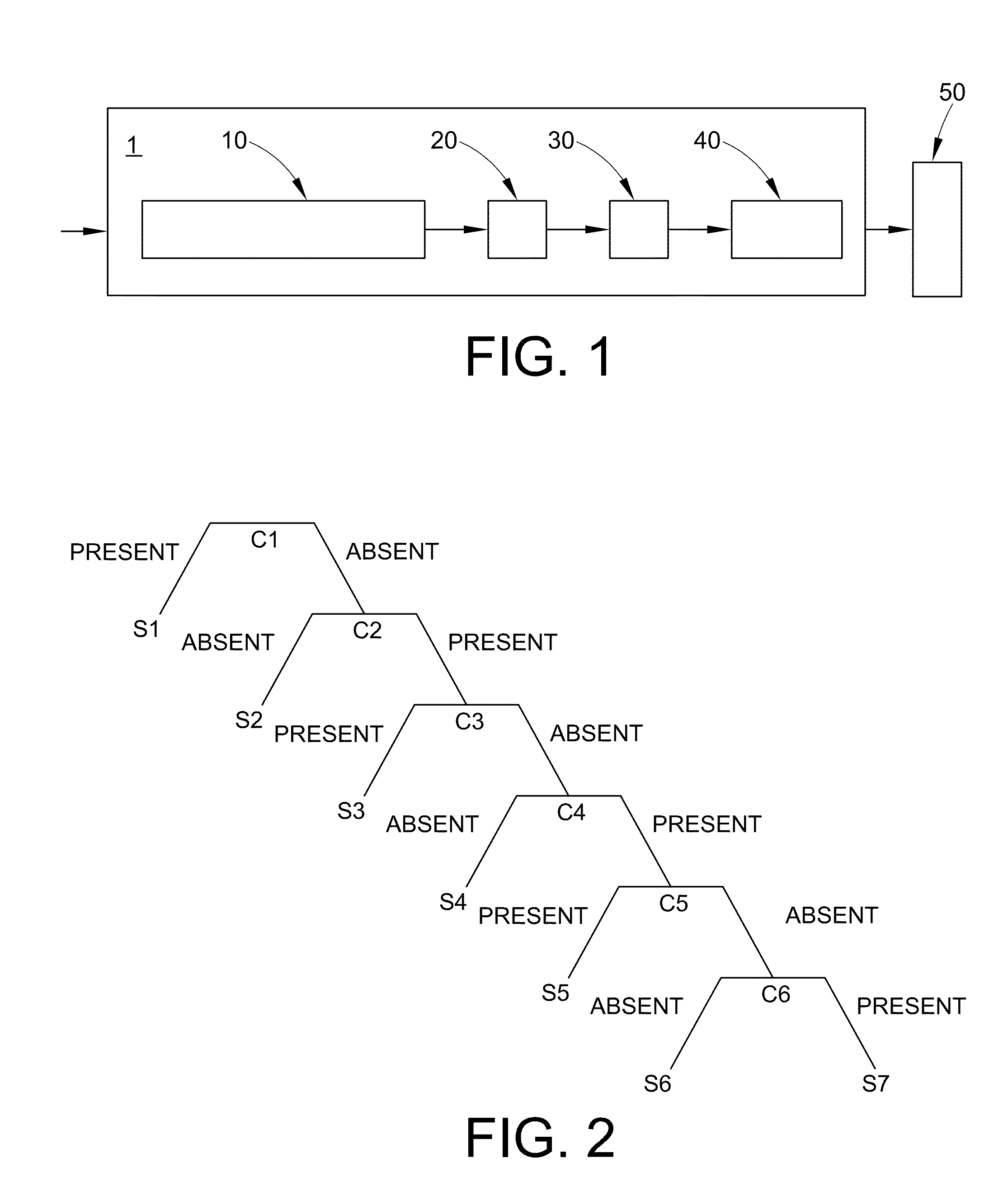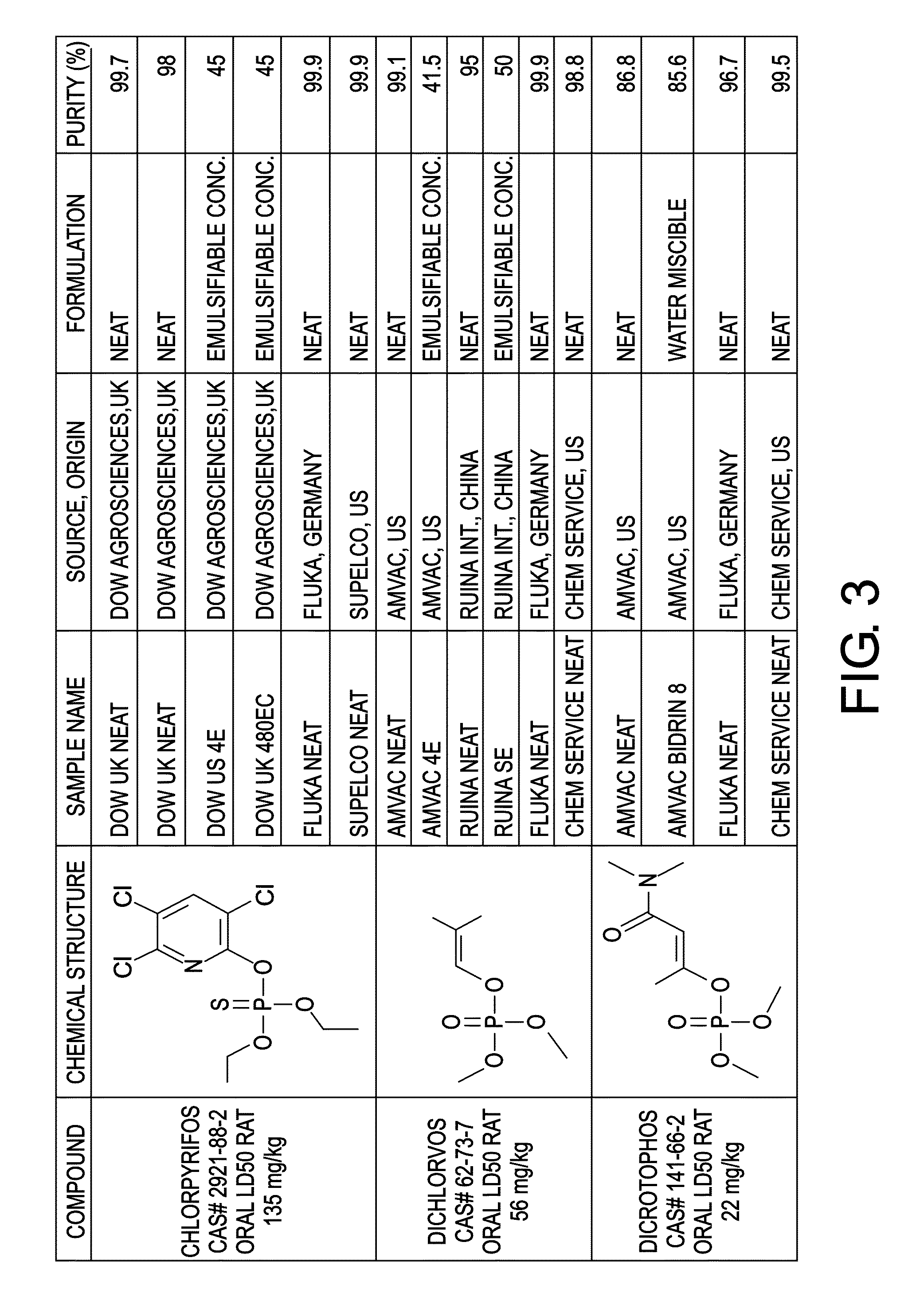Methods of source attribution for chemical compounds
a source attribution and chemical compound technology, applied in the field of source attribution for chemical compounds, can solve problems such as creating health risks for consumers
- Summary
- Abstract
- Description
- Claims
- Application Information
AI Technical Summary
Benefits of technology
Problems solved by technology
Method used
Image
Examples
example
[0070]Organophosphate pesticides (OPP) are a group of highly toxic compounds that are widely available in many countries and may be attractive as a chemical weapon to, for example, terrorists or criminal elements. In this regard, compounds other than the parent OPP, such as manufacturing precursors, byproducts, or degradation products are often present in commercial preparations and can thus provide a fingerprint for a source of the OPP.
[0071]Three different OPPs were used in the experiment. Those three OPPs were chlorpyrifos (CAS#2921-88-2), dichlorvos (CAS#62-73-7), and dicrotophos (CAS#141-66-2). Each OPP had four to six different sources, as shown in FIG. 3. For each source, 10 replicates (i.e. samples) were used to characterize variability, each diluted in acetone. 10 replicates of acetone were also used and designated as “solvent blank” for a control.
[0072]Two-dimensional gas chromatography coupled with time-of-flight mass spectrometry (GCxGC-TOFMS) was used to evaluate all of...
PUM
| Property | Measurement | Unit |
|---|---|---|
| retention time | aaaaa | aaaaa |
| retention time | aaaaa | aaaaa |
| retention time | aaaaa | aaaaa |
Abstract
Description
Claims
Application Information
 Login to View More
Login to View More - R&D
- Intellectual Property
- Life Sciences
- Materials
- Tech Scout
- Unparalleled Data Quality
- Higher Quality Content
- 60% Fewer Hallucinations
Browse by: Latest US Patents, China's latest patents, Technical Efficacy Thesaurus, Application Domain, Technology Topic, Popular Technical Reports.
© 2025 PatSnap. All rights reserved.Legal|Privacy policy|Modern Slavery Act Transparency Statement|Sitemap|About US| Contact US: help@patsnap.com



